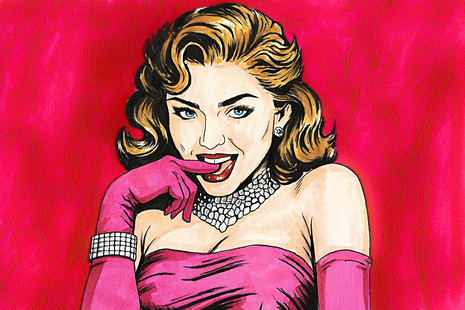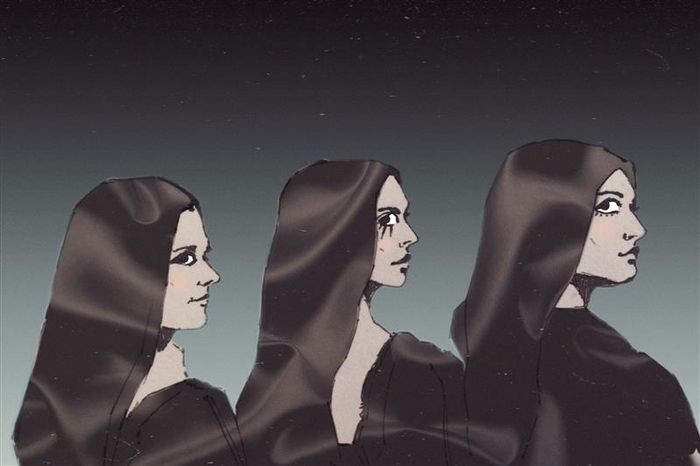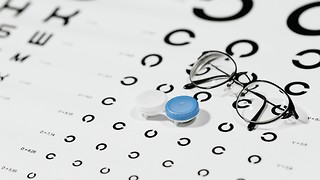Streaming killed the video star
In the age of snippets and short-form, Tia Ribbo calls for the resurrection of the music video

If you’re anything like me, you’ll have spent an embarrassingly large portion of your childhood watching music videos on MTV (or even Kerrang, for those of us with emo-inclined older siblings). I remember staring transfixed at a bronzed Beyonce strutting down the street in red heels in ′Crazy in Love’, and I believed wholeheartedly that ‘Sorry for Party Rocking’ was a true-to-life recreation of an adulthood bender. Music videos were once portals to worlds of audio-visual beauty, distant realms where everyone was young, attractive, perfectly colour-graded and narrativised. It was a golden age, and we took it all for granted.
In 2025, music is primarily a digital experience. We have flocked from TV to Tiktok and Netflix, where music is background noise. Artists shooting for a hit no longer prioritise a flashy three-minute minifilm, but instead strive to arrange a catchy enough few seconds of music to hopefully spark a trend. After all, few of us, now, spend our Saturday mornings pouring over the latest music videos from today’s starlets. Yet, for about 40 years, that was exactly what we did.
“If it wasn’t the hook you were coming back for, it was surely the visuals”
Music videos were an art form integral to the industry, combining promotion and artistic expression. In 1981, MTV launched, signalling the start of an era of 24/7 music on TV. Some of the biggest stars of the period – from Michael Jackson to Madonna – could trace no small sum of their success to their videos, with their high concepts (think Madonna’s slick, Fincher-directed Vogue), costume, and choreography. Music videos swelled in popularity so much that, from 1991 to 2001, Billboard had its own Music Video Awards. Back then, listeners couldn’t just click on Spotify and search for what they liked. Instead, they had to sit down and watch the video like a short film, or at least have it on in the background. Music videos offered the song another avenue for longevity – if it wasn’t the hook you were coming back for, it was surely the visuals.
Most of us will recall VEVO, launched in 2009 as a joint venture between three major record companies, under whose capitalised banner YouTube would post the hits of the day. But that era is no more. The culprit is obvious: people just don’t watch music videos that much anymore. The time of reckoning has come in full-force with short-form content platforms like Tiktok, where music can be chopped up, ripped of its video and context, and marooned amongst non-related visuals.
“Charming and cinematic in the way music videos should be”
The downturn in the production of interesting music videos is merely a response to our consumer habits. A lot of artists now would rather put money and time into promoting snippets on social media than constructing a music video to snare in viewers, as was typical of previous eras. After all, it’s smart marketing: why spend millions on a big video people will watch once, when a tiktok trend gets the work done for less? In a recent TikTok, Lizzo declared the age of music videos is over: “You can shoot a music video on your iPhone”.
Yet we also have a handful of pop stars picking up the slack, attempting to provide some serious mouth-to-mouth to the form. Take, for instance, Sabrina Carpenter’s connected string of elaborately-produced videos, all gorgeously costumed, cast and scripted. In her latest, ‘Tears’, Carpenter becomes a vintage belle thrust suddenly into a haunted house, only the spectres in question are not ghostly apparitions, but vibrant drag queens, helmed by the fabulous Coleman Domingo.
“Encouraging listeners and artists alike to strive to impress, rather than merely deliver the bare minimum”
Even up-and-coming Addison Rae, who got her start on TikTok, is unafraid to toy with the music video form. Rae has put out a steady stream of music indebted to the pop girls of the past, so it’s no wonder she takes on the torch of well-crafted music videos, too. Diet Pepsi, a Vogue-like black-and-white number, sees Rae frolicking in the backseat of a car, touching and feeding an unnamed generic handsome man in her front seat. The shadows are haunting, perfectly matched for her whispery head voice.
Music videos were once opportunities to gain mass viewership, whether through MTV or through viral moments on Youtube. Nowadays, unless a star has a steadfast audience, it’s practically throwing money away.
So… what’s next?
Well, first of all, music videos won’t just disappear. If anything, the decline is inspiring a fresh new wave of experimentation amongst the bolder pop acts, and this experimentation, too, has a storied history: from Taylor Swift’s All Too Well short film to Gaga and Beyonce’s Tarantino-inspired video for Telephone. But this is merely symptomatic of the monoculture tapering off as we gain access to other avenues of entertainment. Most importantly, music videos are no longer the main way to hear new music besides radio. Now the only people who are watching music videos are people who just actually want to watch music videos. Artists are not going to stop making music videos, and they may not draw in the numbers they used to. But those which do – we know now – are certainly worth watching.
 News / CUP announces funding scheme for under-represented academics19 December 2025
News / CUP announces funding scheme for under-represented academics19 December 2025 News / Cambridge welcomes UK rejoining the Erasmus scheme20 December 2025
News / Cambridge welcomes UK rejoining the Erasmus scheme20 December 2025 News / SU reluctantly registers controversial women’s soc18 December 2025
News / SU reluctantly registers controversial women’s soc18 December 2025 Film & TV / Timothée Chalamet and the era-fication of film marketing21 December 2025
Film & TV / Timothée Chalamet and the era-fication of film marketing21 December 2025 News / News in Brief: humanoid chatbots, holiday specials, and harmonious scholarships21 December 2025
News / News in Brief: humanoid chatbots, holiday specials, and harmonious scholarships21 December 2025









